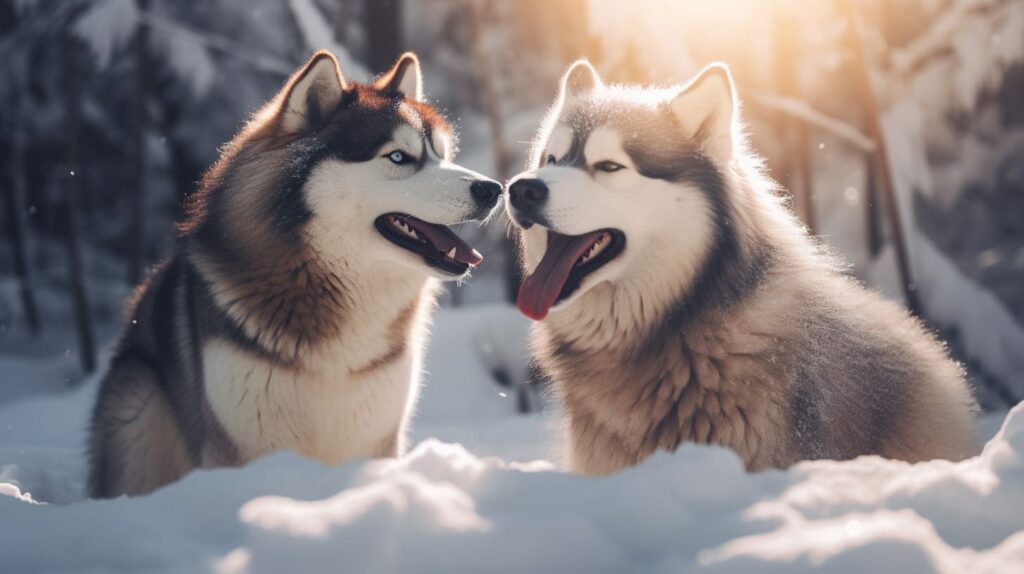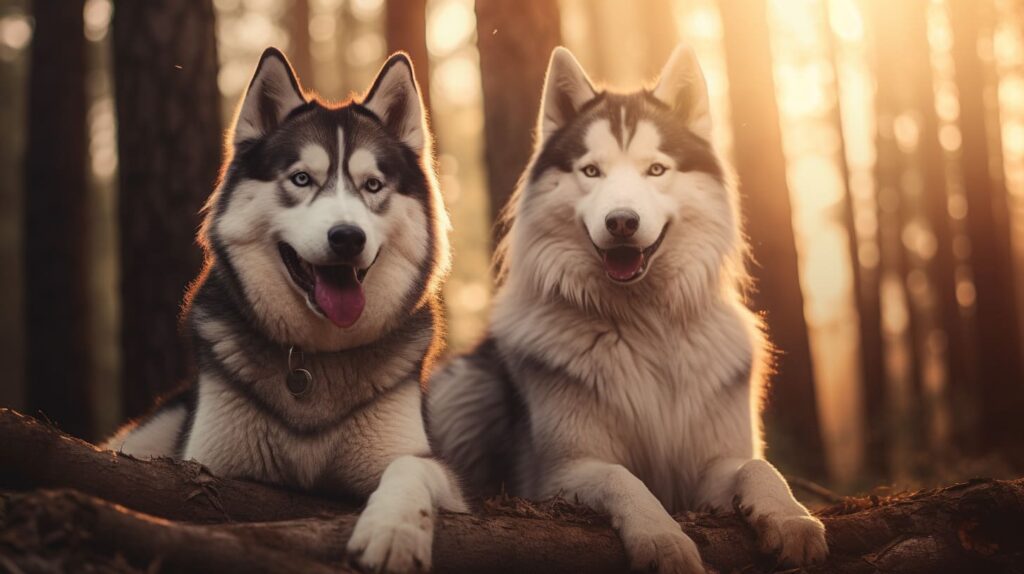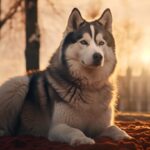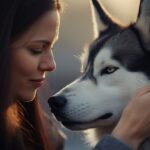When it comes to sled dog breeds with a wolf-like appearance, the Husky and Malamute are often the first names that come to mind. Both breeds share a cold-weather heritage and a striking, wolfish visage that can turn heads and melt hearts. However, despite their similarities, Huskies and Malamutes have distinct traits that set them apart. In this article, we will explore the Husky vs Malamute debate, shedding light on the differences and similarities between these two majestic breeds.
Historical Backdrop
Siberian Husky
Originating from the cold expanses of Siberia, the Siberian Husky has a rich history as a sled dog that was integral to the survival of the Chukchi people. Their ability to pull light loads at a fast pace over vast icy stretches made them indispensable. The breed’s journey to the United States began when they were imported to Alaska to compete in sled races, gaining fame for their incredible endurance and speed.
Alaskan Malamute
On the other hand, the Alaskan Malamute hails from the Arctic regions, bred by the Mahlemut tribe for their strength and endurance to haul heavy loads. Unlike the speed-oriented Husky, Malamutes are powerhouses, built for stamina and strength in the harshest of climates.
Physical Comparison
When it comes to a face-off in the physical arena, the Husky and Malamute are like the snow-dusted cousins who’ve chosen different gym regimes. Let’s dive into the Husky vs Malamute physique.
Size and Build
Siberian Huskies are the middleweights, tipping the scales between 35 to 60 pounds and standing proud at a height of 20 to 24 inches. They sport a lean, agile frame designed for speed and endurance.
On the other flipper, Alaskan Malamutes are the heavyweights of the northern dog world. They boast a robust frame, weighing in at a hefty 75 to 100 pounds and standing tall at 23 to 25 inches. Their muscular build is a testament to their history as freight haulers in the arctic.
Coat and Color
Both breeds don a thick, double coat to brave the icy chills. Huskies wear a medium-length fur coat available in a rainbow of colors including black, grey, red, and agouti, often mixed with white. Their eye color can range from blue, green, brown, or a captivating combination of the two.
Malamutes, on the other hand, prefer a more monochrome wardrobe. Their coat, longer and denser, comes in shades of black, grey, sable, and red, always with a white face, belly, legs, and paws. They typically have brown eyes, with the blue-eyed Malamute being a rarity.
Temperament and Behavior
The personality stage is where the Husky and Malamute dance to different tunes.
Social Butterfly vs Gentle Giant
Huskies are the life of the party. They are friendly, gentle, and get along well with humans and other dogs. Their playful antics and expressive faces are sure to keep you entertained.
Malamutes, on the other hand, are the gentle giants of the dog world. They are affectionate and friendly, albeit a tad reserved. They tend to form strong bonds with their families and are known for their loyalty.
Vocal Expressions
Huskies are known for their vocalizations, often engaging in melodious howls and ‘talking’ to their owners. It’s like having a fur-coated opera singer at home!
Malamutes are quieter but will voice their opinions with a howl or a ‘woo-woo’ sound when necessary. It’s their way of having a heart-to-heart with you.

Training and Exercise Needs
The gym routines for Huskies and Malamutes are as different as ice and snow.
Training
Huskies are intelligent but have a streak of independence which can make training a challenge. Consistency, patience, and positive reinforcement are the keys to training a Husky.
Malamutes are eager to please but can be stubborn. Early socialization and obedience training are crucial to raise a well-behaved Malamute.
Exercise
Both breeds have high energy levels and require regular exercise to keep them happy and healthy. Huskies need a good run to burn off their boundless energy, while Malamutes are content with a long, leisurely walk, though they won’t say no to a good romp in the snow!
Their exercise needs are a testament to their working dog heritage – whether sprinting across the tundra or hauling loads through the Arctic, these breeds are built to move!
Grooming and Maintenance
Prepare to have fur as a new accessory in your wardrobe because both Huskies and Malamutes come with a shed-load of grooming needs!
Husky Hair Haven:
Siberian Huskies have a double coat that acts like a thermal wear in chilly climates, and like any good garment, it requires regular upkeep. A good brush-down once or twice a week will keep their coat looking shiny and healthy, but come shedding season (spring and fall), you might find yourself in a fur-tornado.
Malamute Mane Maintenance:
Malamutes take the fur game up a notch with their dense, plush coat. They demand a bit more elbow grease, necessitating a thorough brush at least twice a week to prevent mats and tangles. And just like Huskies, they have their own shedding seasons, which may require daily grooming sessions to keep the fur-pocalypse at bay.
A good grooming regimen not only keeps the fur under control but also provides the opportunity to check for skin issues, ticks, or other potential health concerns.
Health Concerns
Beneath the fur and playful antics, Huskies and Malamutes have their own set of health quirks.
Husky Health Hurdles
Huskies are generally healthy dogs with a lifespan of 12 to 15 years. However, they are prone to certain genetic conditions like hip dysplasia and eye disorders such as cataracts and progressive retinal atrophy.
Malamute Maladies
Malamutes share a similar health profile with a life expectancy of 10 to 14 years. They too can face hip dysplasia, and have a predisposition towards bloat (gastric torsion), which can be a life-threatening condition if not treated promptly.
Regular vet check-ups, a balanced diet, and adequate exercise are the trifecta of keeping these northern breeds hale and hearty.
Summary Husky vs Malamute
| Feature | Siberian Husky | Alaskan Malamute |
|---|---|---|
| Origin | Siberia | Arctic |
| Size | Medium | Large |
| Weight | 35-60 lbs | 75-100 lbs |
| Coat Color | Variety of Colors | Shades of Gray and White |
| Temperament | Friendly, Gentle | Affectionate, Friendly |
| Exercise Needs | High | Moderate to High |
| Training Difficulty | Moderate | Challenging |
| Grooming Needs | Moderate | High |
| Health Concerns | Hip Dysplasia, Eye Conditions | Hip Dysplasia, Bloat |
Final Furry Thoughts
In deciphering the Husky vs Malamute debate, it boils down to your personal preferences, lifestyle, and what you’re looking for in a furry companion. Whether it’s the speed and gentle nature of the Husky or the strength and loving temperament of the Malamute, both breeds make for a loyal, loving, and majestic addition to the right homes.






